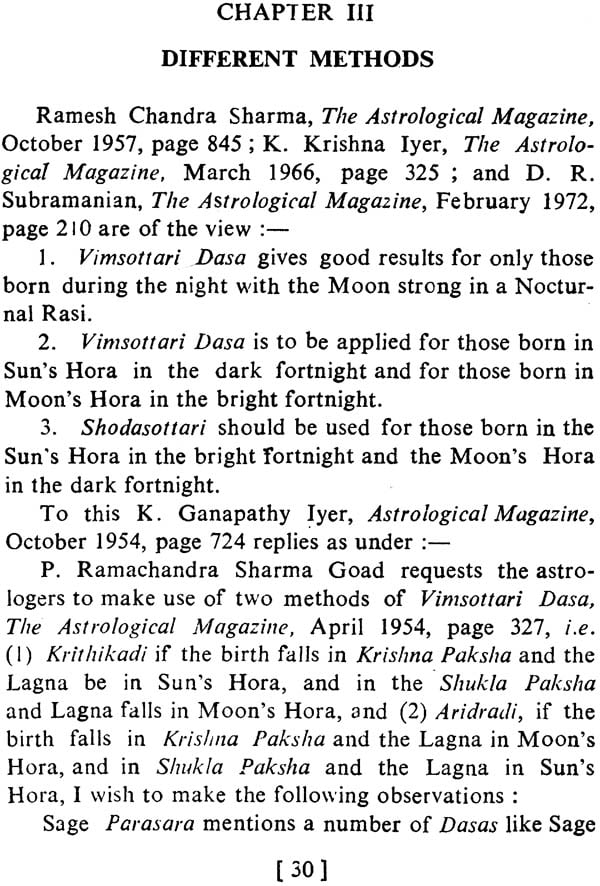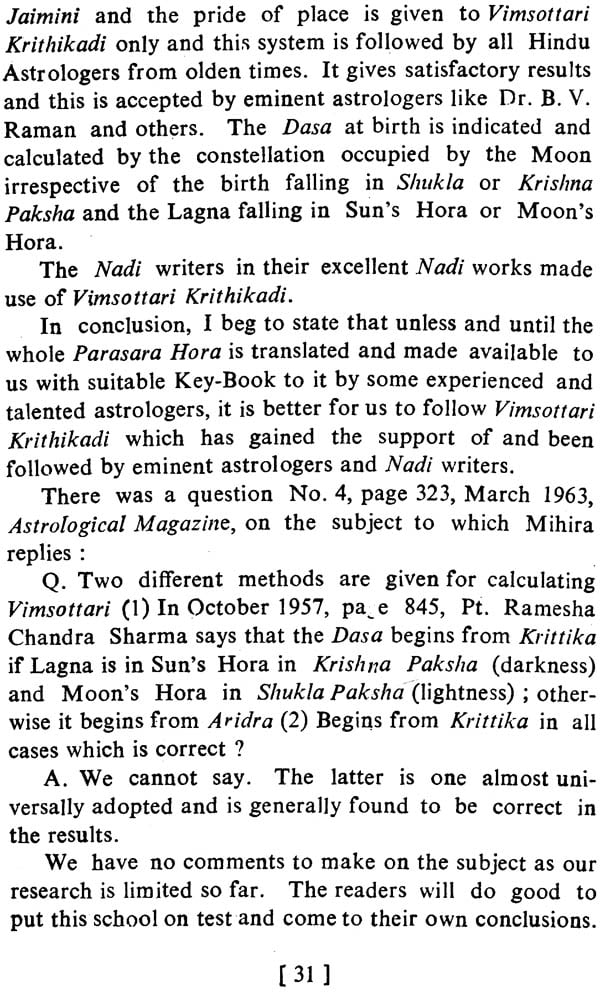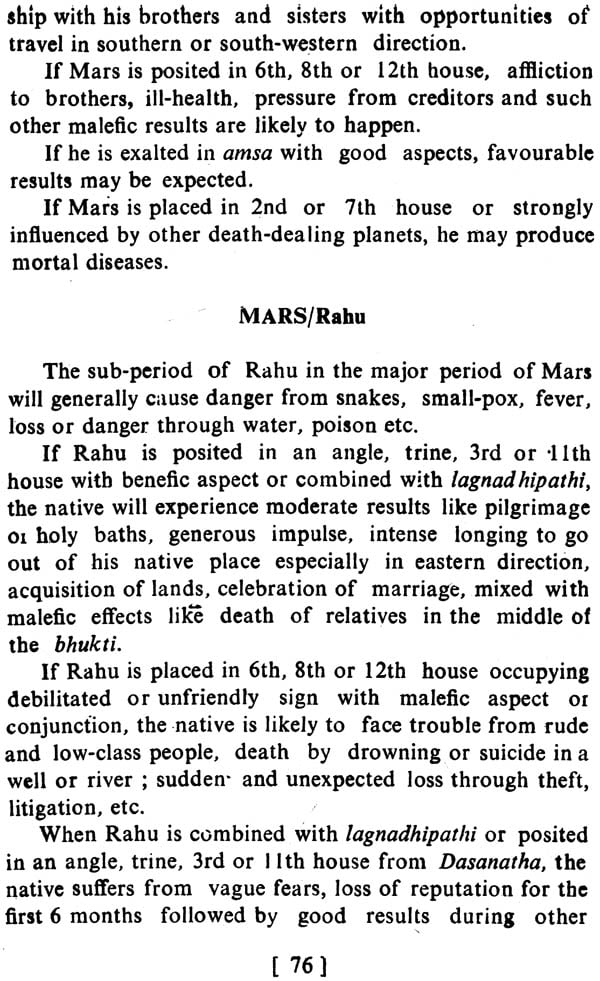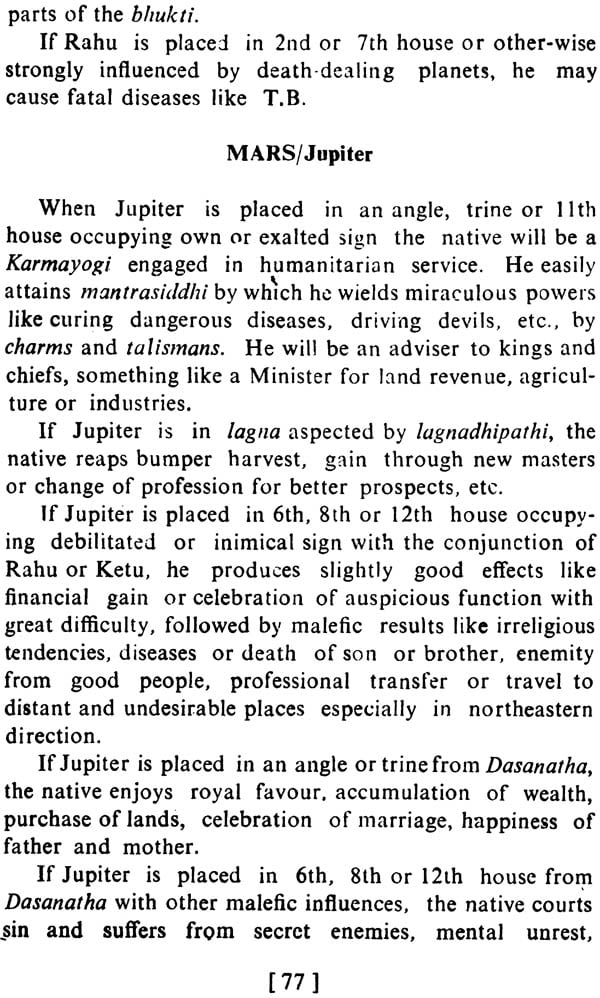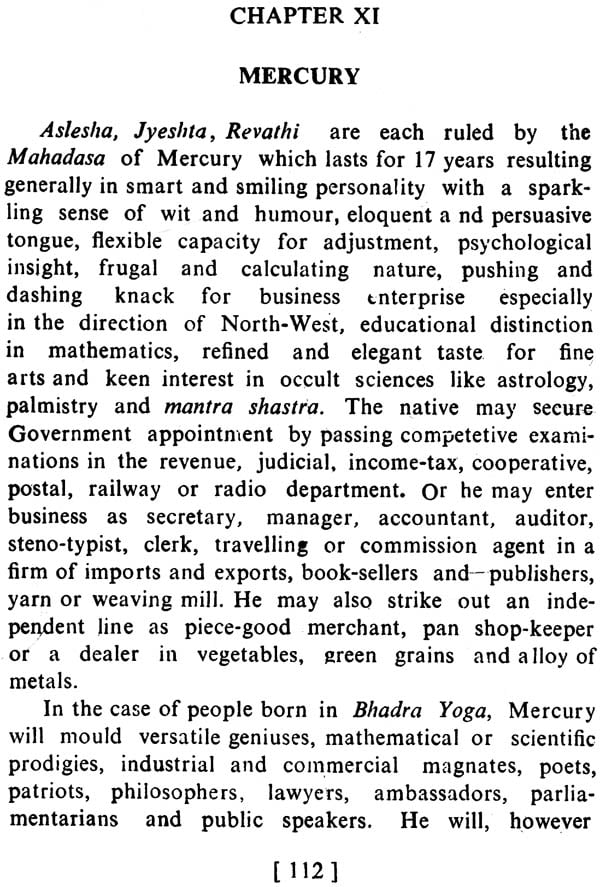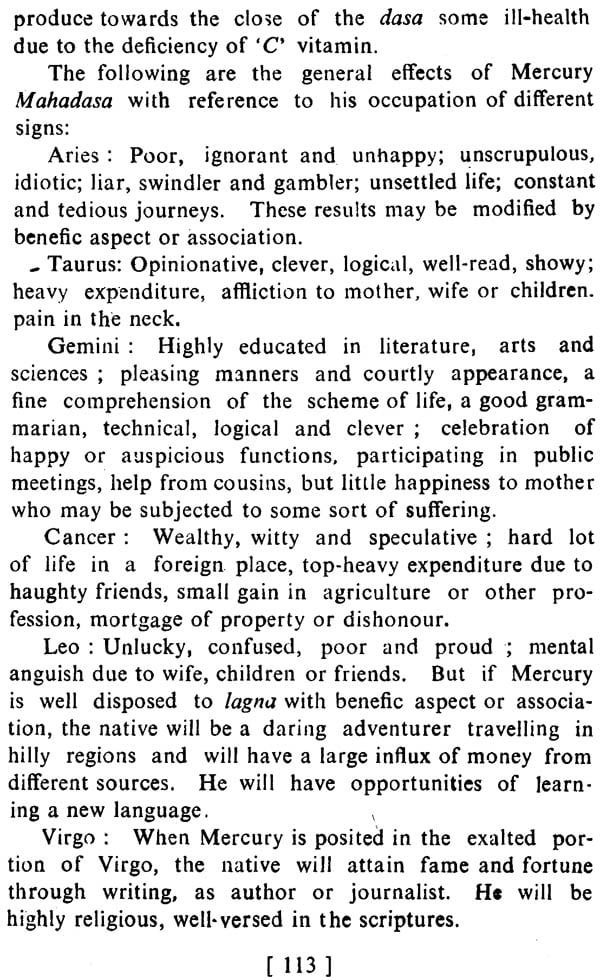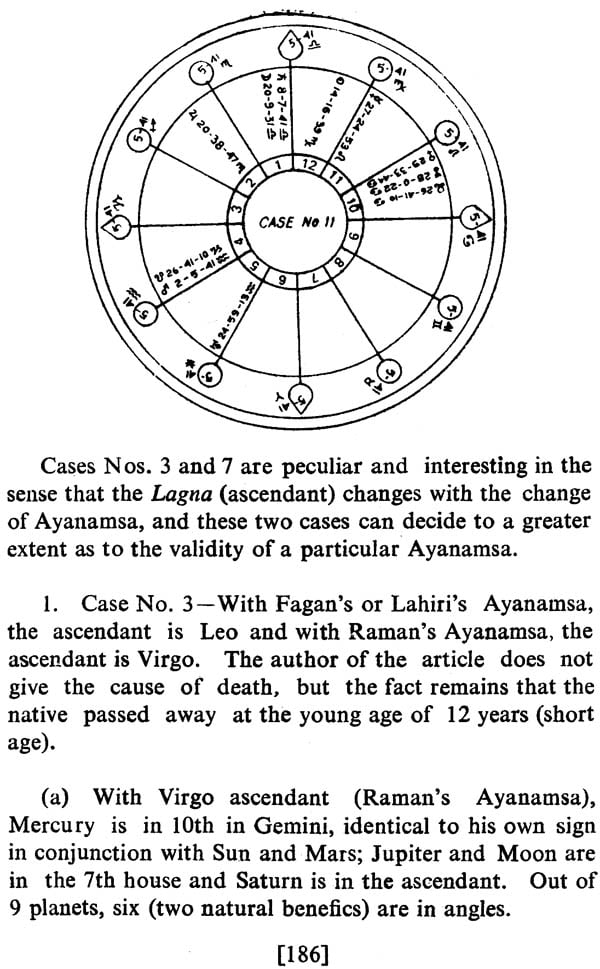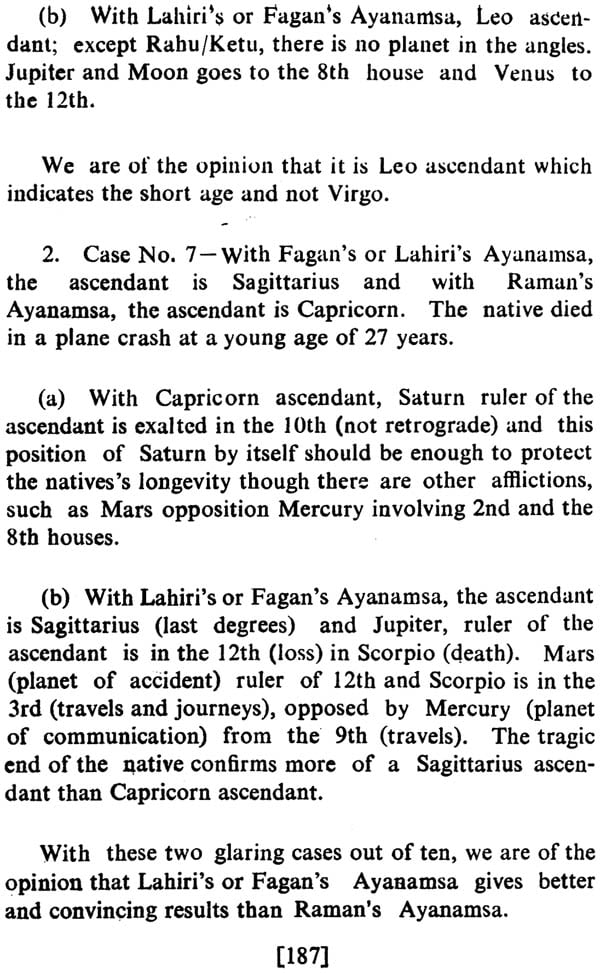
Hindu Dasa System
Book Specification
| Item Code: | IDK374 |
| Author: | Grace Inglis |
| Publisher: | Sagar Publications |
| Language: | English |
| Edition: | 2002 |
| Pages: | 205 |
| Cover: | Paperback |
| Other Details | 7.0 inch X 5.0 inch |
| Weight | 170 gm |
Book Description
Introduction
The antiquity of Indian Astrology is as remote as the Vedas. It forms one of the Angas of the Angas of the Atharva-Veda. The Jyotish Shastra (Astrology), as mentioned in the Atharva-Veda, consists of one hundred and sixty-five verses only. In fact, the whole of the Jyotish-Shastra then consisted, was on observing the movements of the Sun, the Moon, their passage through the constellations (Nakshatras) and assigning a certain significance to them, and was then made more applicable to a Mundane Astrology than to a judicial one. It will thus be seen that the origin of the present day Astrology is to be found in the Atharva-Veda-Jyotish, the probable date of which, according to Dixit and others, is 900 to 1500 B.C.
No mention is made in it of the signs (Rashis) of the zodiac. Signs had no existence then. It must not be supposed, however, that the division of the zodiac into twelve parts was not known to the Hindus in those times; but the twelve parts were then known by different names. The ancients wholly depended on the Nakshatras and their qualities. As time went by, owing to the invasions of the Muslims and Greeks, and their association with our people, their science got mixed up with ours, and the present astrology, as it is studied and practiced, is a combination of Chaldean, Grecian and Egyptian Astrology. We are not entering here into a discussion of claiming priority of the science for Hindus. It is proved beyond doubt by Sankar Balkrishna Dixit, in his Bhar-tiya Jyotish Shastra (History of Indian Astronomy), a book written in Marathi, but now translated in English. This claim of priority is further supported by Sepharial; in his book "The Science of Foreknowledge" in the chapter on Indian Astrology.
As regards Directional Astrology (that part of Astrology which predicts the timing of events in life, indicated by the Natal Chart) of the Hindus (the Dasa Paddhati) is quite unique.
This system, as mentioned in ancient astrological works of the world. It is the simplest known system of Timing the Events, though Directional Astrology in known to be the most difficult to understand. One can gauge how difficult it is from the following words of that great English Astrologer, Raphael written in the preface of his "Guide to Astrology." He writes: "The part of Astrology which relates to the determination of future events is the most unsatisfactory, part. I may be allowed to say that the unsatisfactory condition of be allowed to say that the unsatisfactory condition of this part is a wise intervention of God, for, if one knew for certainty what was going to happen at a particular time, most of the world would either be lunatics or commit suicides."
There are many kinds of Dasas. Parashara, in his book, has mentioned about 42 of them, but of these, Vimsottari Dasa is the most popular, with which we are for the present concerned in this book. In the choice of any particular type of Dasa, the criterion must be that of experience and Vimsottari has answered this test. The total period is for 120 years and it is divided into nine parts presided by the Sun, the Moon, five planets and by Rahu and Kethu (Dragon's Head and Dragon's Tail).
The position of the Moon at birth is important in the calculation of the Dasas. Every constellation covers 13-20 Degrees of the zodiacal space. Each Nakshatra has a planet assigned as its Lord and the Dasa at birth is determined by the constellation occupied by the Moon at the moment of birth.
| Chap | Page No. | |
| | ||
| I | Introduction | 1 |
| II | Rationale of Vimsottari | 8 |
| III | Different Methods | 30 |
| IV | Time Factor "Year" | 32 |
| V | Period of Sun | 52 |
| VI | Moon | 62 |
| VII | Mars | 72 |
| VIII | Rahu | 83 |
| IX | Jupiter | 93 |
| X | Saturn | 104 |
| XI | Mercury | 112 |
| XII | Kethu | 121 |
| XIII | Venus | 130 |
| XIV | (i) General effects of sub-sub-periods of Planets in sub-period of a Plane | 140 |
| (ii) Tables of periods, sub-periods and inter-periods of planets | 153 | |
| XV | Inter Pretation of Dasa Results | 163 |
| | ||
| Practical Method | 175 |
